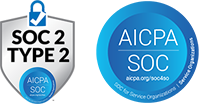What Is Hybrid Work?
Hybrid Work is a flexible model where employees divide their time between remote locations (usually home) and a physical workplace. Instead of a single default location, teams coordinate presence based on task type, collaboration needs, and policy rules—supported by clear schedules, digital tools, and people analytics to keep productivity and culture intact.
Why Hybrid Work Matters
Organizations want the focus gains of remote work and the creative energy of in-person collaboration—without bloating real-estate costs or burning people out. Hybrid Work, when designed deliberately, boosts engagement, widens talent pools, and preserves culture. Poorly designed, it breeds inequity (remote invisibility), meeting overload, and policy confusion. Data-led guardrails separate winning hybrids from chaotic ones.
Where Hybrid Work Is Used
- Knowledge Industries (Tech, Finance, Consulting): Deep work at home; complex planning and workshops in-office.
- Healthcare Admin & Education Services: Back-office roles rotate remote days while patient-facing or classroom roles stay on-site.
- Public Sector & Utilities: Policy, analytics, and support teams adopt hybrid while field crews remain location-bound.
- SMBs & Startups: Hybrid reduces space costs but still creates “together days” for cohesion and speed.
Hybrid Work Key Benefits
- Talent Access & Retention: Hire beyond commuting radius; offer flexibility that keeps top performers.
- Cost Efficiency: Optimize office footprints and travel budgets by right-sizing space to “peak days.”
- Productivity Balance: Quiet remote time for focus; office time for brainstorming and social capital.
- Data Visibility: Attendance, space-use, and collaboration metrics feed People Analytics for continuous tuning.
- Equity & Inclusion: Properly structured hybrids reduce bias by documenting decisions and normalizing async work.
Best Practices & Examples
- Task-Based Playbooks: Define which work types need in-person time (e.g., design sprints) versus async remote work.
- Team-Level Charters: Let teams specify “anchor days,” meeting norms, and response-time expectations—then publish them.
- Digital Parity: Equip conference rooms for one-click video, mandate shared docs, and rotate facilitation so remote voices aren’t sidelined.
- Measure & Iterate: Track badge swipes, meeting load, sentiment, and attrition in dashboards; adjust policies quarterly.
- Example: A U.S. SaaS firm set two anchor days per team plus optional drop-ins. With analytics on focus time vs. meeting hours, they trimmed meetings 18% and raised engagement scores in six months.
Conclusion
Hybrid Work is not a 3/2 schedule—it’s an operating system for flexibility. When organizations pair clear norms with robust analytics, they balance autonomy and alignment, slash wasted office spend, and maintain a cohesive culture. Treat it as a living program—measure, learn, iterate—and Hybrid Work becomes a competitive edge, not a compromise.
Hybrid Work FAQs
Q: What does hybrid work mean?
Hybrid work means employees split time between remote and on-site locations under defined guidelines. The model blends flexibility with structured collaboration, using tools and policies to keep productivity, equity, and communication consistent.
Q: What does it mean to work on hybrid?
Working on hybrid means following a schedule where some days are remote and others are in-office. Employees coordinate with managers on anchor days, leverage digital tools for async tasks, and come in when face-to-face work adds clear value.
Q: What is an example of hybrid work?
Example: A marketing team meets in-office Tuesdays and Wednesdays for brainstorming and client reviews, while Monday, Thursday, and Friday are remote focus days—tracked through shared calendars and collaboration dashboards.
Q: How many days is hybrid working?
Hybrid working days vary by policy—common patterns are 2–3 office days weekly or monthly “onsite sprints.” The key is aligning days-in-office with collaboration needs, not arbitrary counts, and reviewing data to refine the ratio over time.




